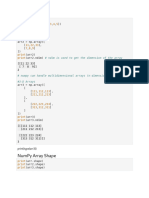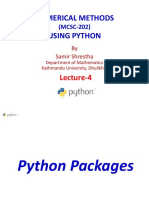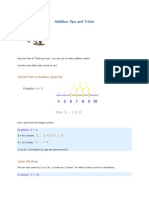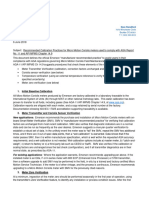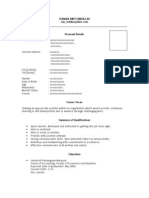0% found this document useful (0 votes)
22 views28 pagesData Science Practical
The document provides a series of Python programs that demonstrate the use of various libraries such as NumPy, SciPy, Jupyter, Statsmodels, and Pandas for data manipulation and analysis. Key functionalities explored include array creation, statistical operations, data visualization, and correlation analysis. Each section includes code snippets and their corresponding outputs, showcasing practical applications of these libraries.
Uploaded by
borleajay45Copyright
© © All Rights Reserved
We take content rights seriously. If you suspect this is your content, claim it here.
Available Formats
Download as PDF, TXT or read online on Scribd
0% found this document useful (0 votes)
22 views28 pagesData Science Practical
The document provides a series of Python programs that demonstrate the use of various libraries such as NumPy, SciPy, Jupyter, Statsmodels, and Pandas for data manipulation and analysis. Key functionalities explored include array creation, statistical operations, data visualization, and correlation analysis. Each section includes code snippets and their corresponding outputs, showcasing practical applications of these libraries.
Uploaded by
borleajay45Copyright
© © All Rights Reserved
We take content rights seriously. If you suspect this is your content, claim it here.
Available Formats
Download as PDF, TXT or read online on Scribd
/ 28











